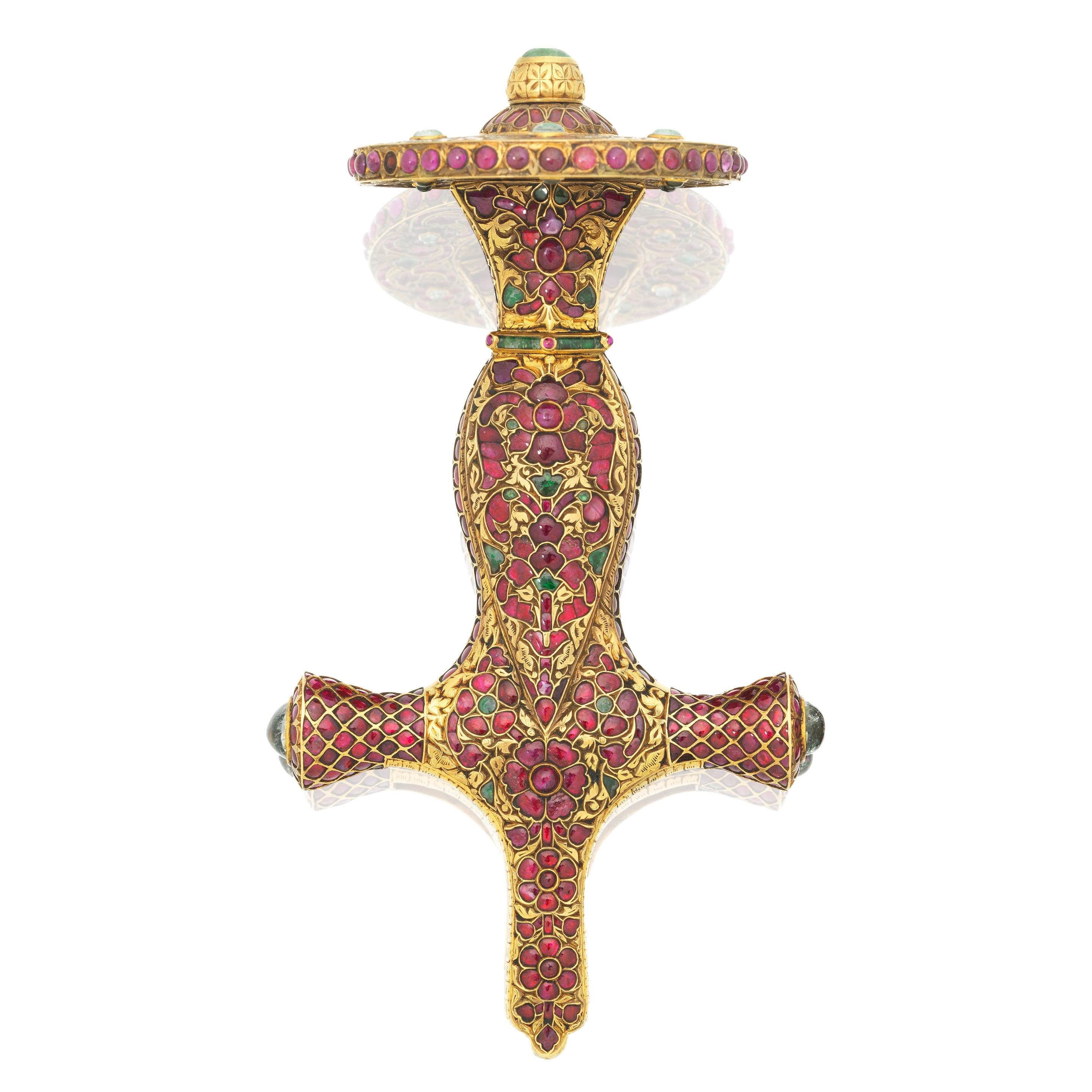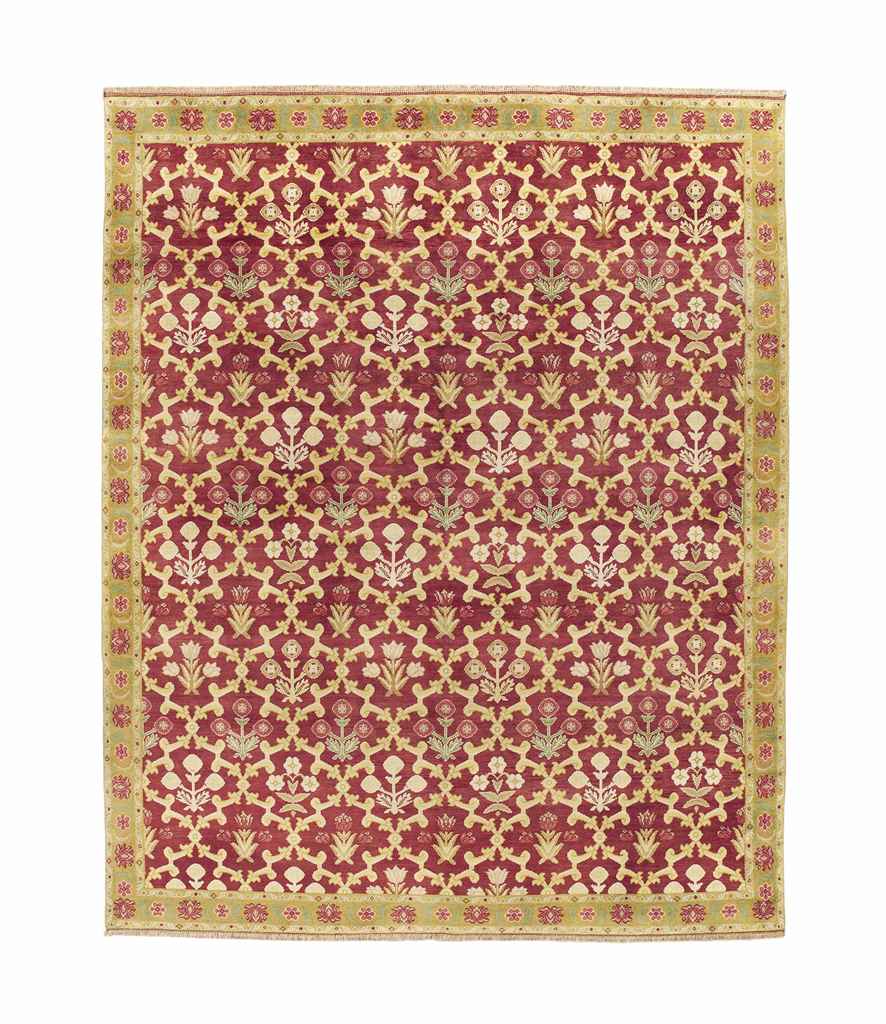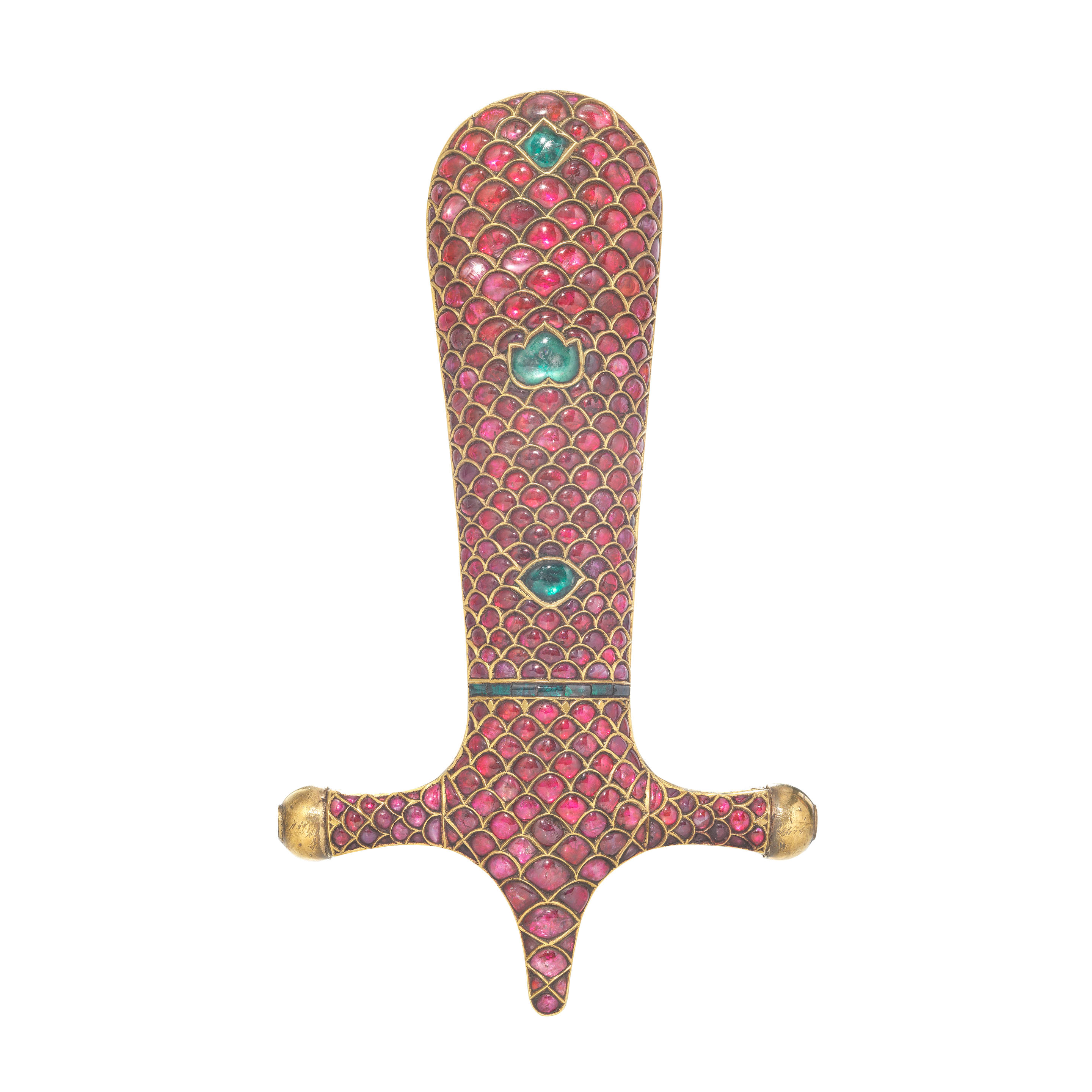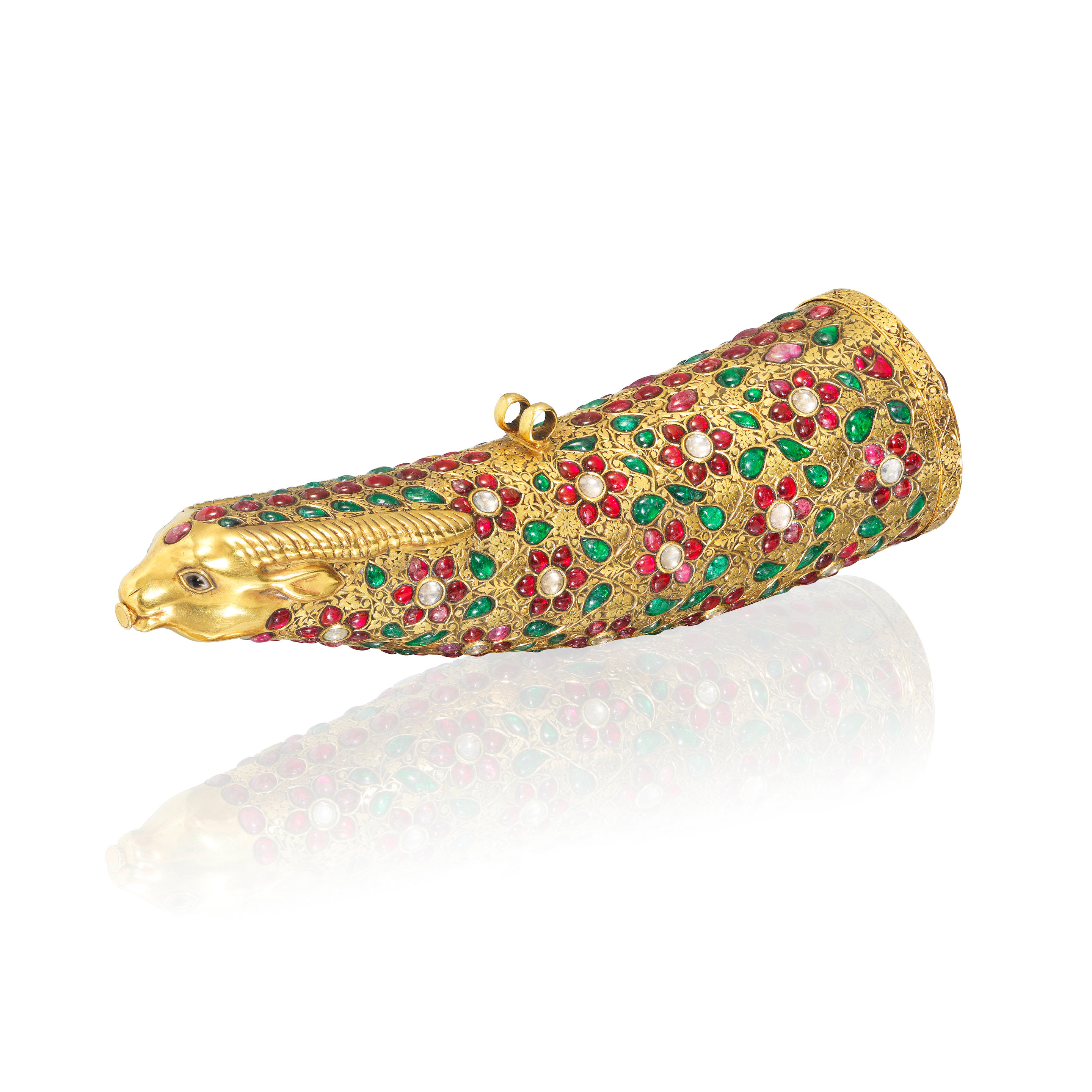A fine Mughal style gem-set gold spoon Indiawith shallow rounded bowl, the multifaceted handle of tapering form terminating in a domed finial, profusely engraved and inlaid with diamonds, rubies, emeralds and paste to each side with floral interlace, the top of the handle with perching parakeets, gold tested as 23 carat, in fitted box 21 cm. long; 202 g. FootnotesProvenance The Al Thani Collection. Published Amin Jaffer and Amina Taha-Hussein Okada, From the Great Mughals to the Maharajahs, Paris, 2017, p. 270, no. 202. Tesori dei Moghul e Maharaja. La Collezione Al Thani, exh. cat., The Doge's Palace, Venice, 2018, pp. 286-87, no. 199. Amin Jaffer (ed.), Treasures from the Al Thani Collection, vol. 1, Beijing, 2018, p. 303, no. 203. Exhibited From the Great Mughals to the Maharajahs, Grand Palais, Paris, 29 March - 5 June, 2017. Treasures of the Mughals and the Maharajahs, The Doge's Palace, Venice, 9 September 2017 - 3 January 2018. Treasures from the Al Thani Collection, The Palace Museum, Beijing 2018, 17 April 2018 - 18 June 2018. This spoon recalls ceremonial spoons of the Mughal empire. Their form had a European influence, however the use of the purest gold (kundan) in order to set the stones is indigenous and seemingly unique. The soft gold is refined into strips of tacky foil which are cut and folded, then applied without the need for a further adhesive. A ceremonial spoon of similar form is in the collection of the Victoria and Albert Museum, London (IM.173-1910). For another example sold at Sotheby's see Arts of the Islamic World, 6 April 2011, lot 361. It is not known what the exact use of these kinds of ceremonial spoons was, however it has been suggested that they were made to distribute sweets over which the Fatiha had been recited, conveying blessings (see S. Cary Welch, India: Art and Culture, 1300-1900, catalogue for the exhibition held at the Metropolitan Museum of Art, 14 September 1985- 5 January 1986, p.200, no.128).
A fine Mughal style gem-set gold spoon Indiawith shallow rounded bowl, the multifaceted handle of tapering form terminating in a domed finial, profusely engraved and inlaid with diamonds, rubies, emeralds and paste to each side with floral interlace, the top of the handle with perching parakeets, gold tested as 23 carat, in fitted box 21 cm. long; 202 g. FootnotesProvenance The Al Thani Collection. Published Amin Jaffer and Amina Taha-Hussein Okada, From the Great Mughals to the Maharajahs, Paris, 2017, p. 270, no. 202. Tesori dei Moghul e Maharaja. La Collezione Al Thani, exh. cat., The Doge's Palace, Venice, 2018, pp. 286-87, no. 199. Amin Jaffer (ed.), Treasures from the Al Thani Collection, vol. 1, Beijing, 2018, p. 303, no. 203. Exhibited From the Great Mughals to the Maharajahs, Grand Palais, Paris, 29 March - 5 June, 2017. Treasures of the Mughals and the Maharajahs, The Doge's Palace, Venice, 9 September 2017 - 3 January 2018. Treasures from the Al Thani Collection, The Palace Museum, Beijing 2018, 17 April 2018 - 18 June 2018. This spoon recalls ceremonial spoons of the Mughal empire. Their form had a European influence, however the use of the purest gold (kundan) in order to set the stones is indigenous and seemingly unique. The soft gold is refined into strips of tacky foil which are cut and folded, then applied without the need for a further adhesive. A ceremonial spoon of similar form is in the collection of the Victoria and Albert Museum, London (IM.173-1910). For another example sold at Sotheby's see Arts of the Islamic World, 6 April 2011, lot 361. It is not known what the exact use of these kinds of ceremonial spoons was, however it has been suggested that they were made to distribute sweets over which the Fatiha had been recited, conveying blessings (see S. Cary Welch, India: Art and Culture, 1300-1900, catalogue for the exhibition held at the Metropolitan Museum of Art, 14 September 1985- 5 January 1986, p.200, no.128).













Try LotSearch and its premium features for 7 days - without any costs!
Be notified automatically about new items in upcoming auctions.
Create an alert